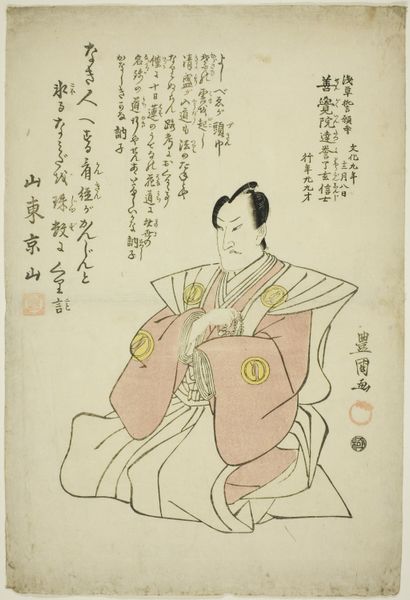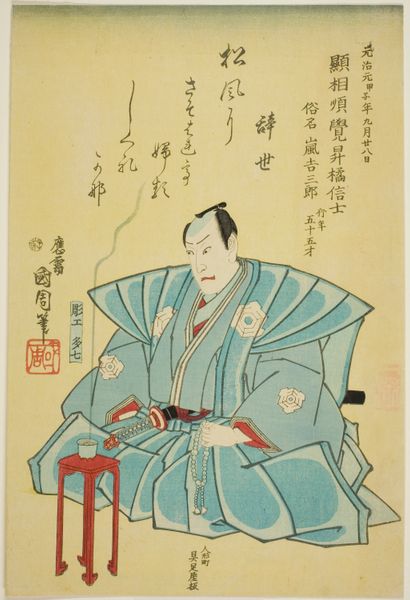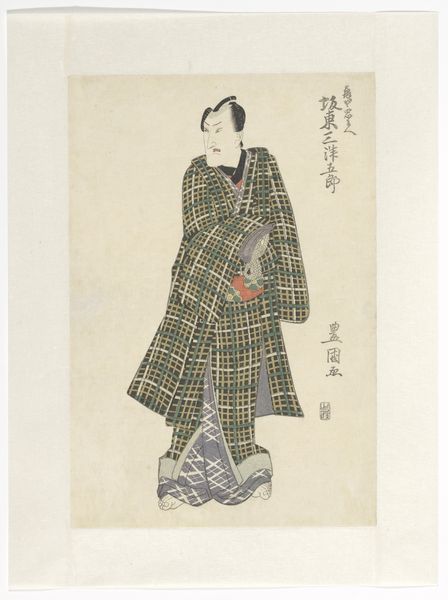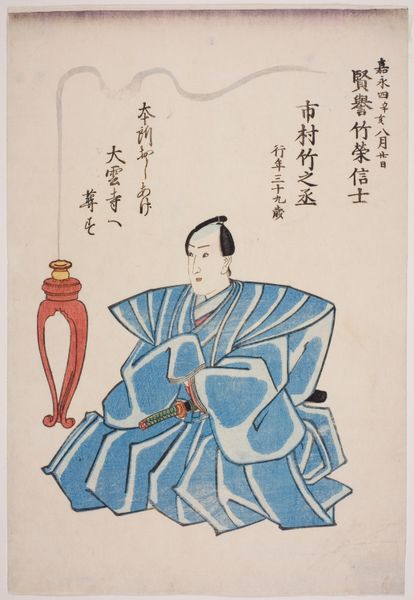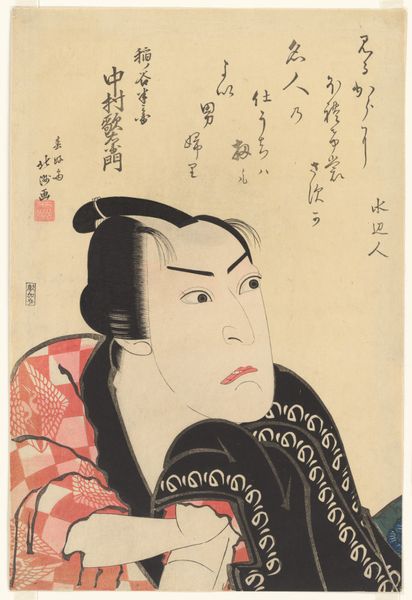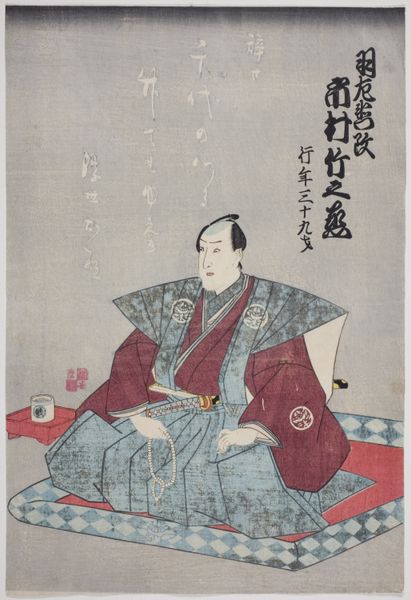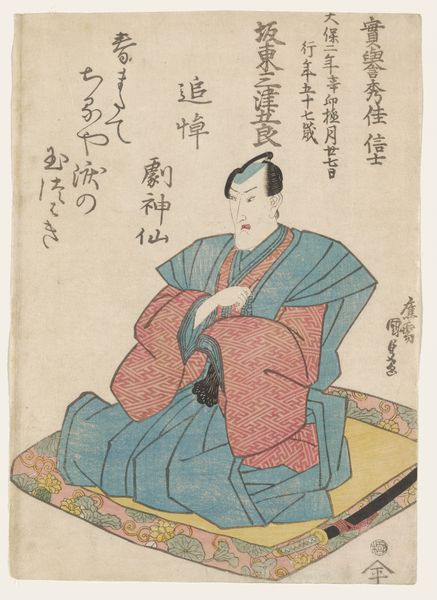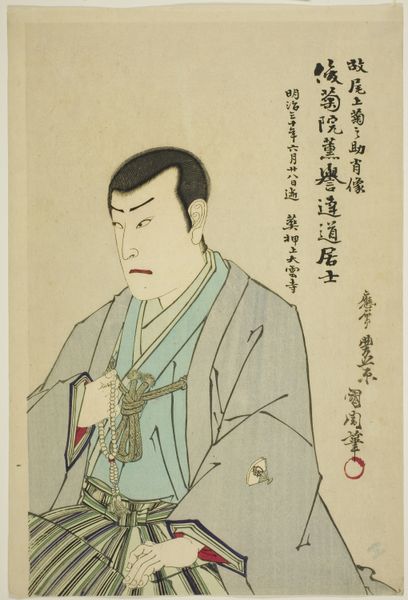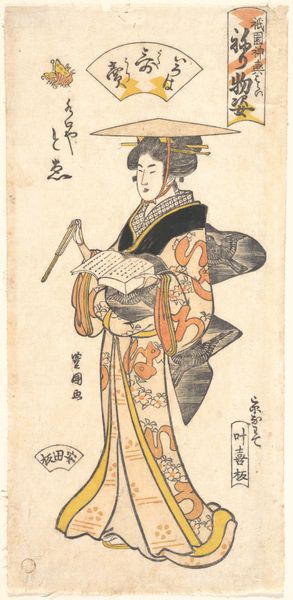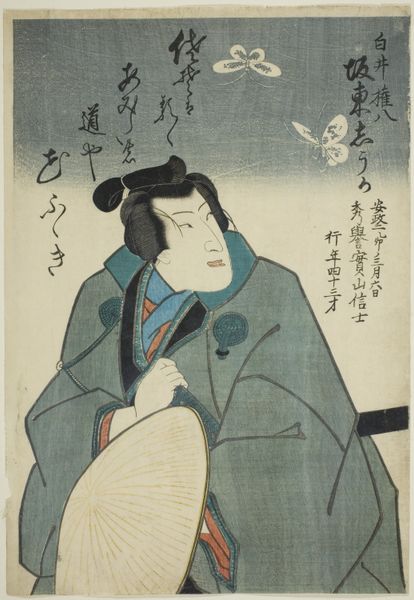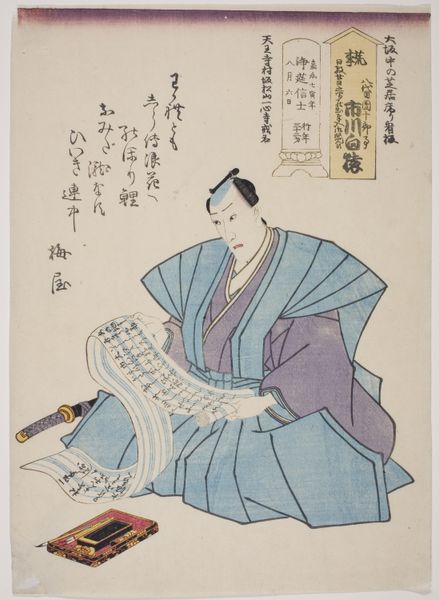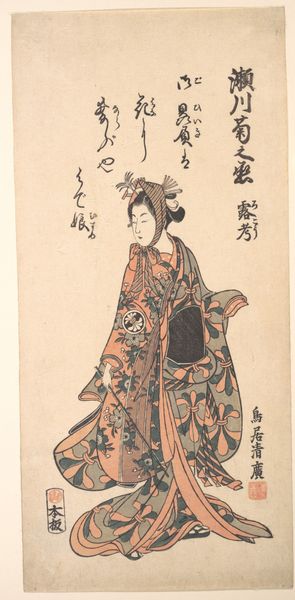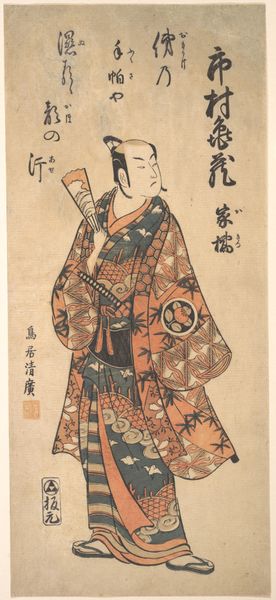
Dimensions: 14 5/8 × 9 13/16 in. (37.15 × 24.92 cm) (sheet, vertical ōban)
Copyright: Public Domain
Curator: Here we have Kanaki Toshikage's woodblock print from 1892, titled "Portrait of Taiso Yoshitoshi," housed right here at the Minneapolis Institute of Art. It's an arresting image of the artist Yoshitoshi. Editor: Arresting indeed. I'm immediately struck by the geometry, that contrast of the strong vertical lines of text with the figure seated low to the ground. It lends a stillness, a sense of quiet introspection, even sadness. Curator: Yoshitoshi, you see, was a leading printmaker of the Meiji era, widely celebrated, yet he struggled with mental illness, spending time in asylums. This portrait, created late in his life, captures a sense of melancholy that reflects the socio-political upheavals Japan was experiencing as it rapidly modernized. The role of the artist and traditional art forms were definitely in flux. Editor: Yes, the composition echoes that fragility. Notice how the planes are constructed - the soft gradients of his face compared to the stark lines of his garment. The texture is incredible, a lattice of fine lines built up. The subdued color palette focuses the eye right on the face. Curator: The ukiyo-e tradition, the "pictures of the floating world," were really facing an identity crisis during this period. Photography was emerging, threatening the relevance of printmaking, and Yoshitoshi felt this pressure acutely. It is a real testament to the public interest that he became such a celebrated portraitist in his time, pushing the boundaries and addressing a sense of collective anxiety. Editor: Absolutely. It makes one think about semiotics, too; that formal pose can communicate layers. He's an artist, seated formally in traditional clothing, almost like an icon. There’s a tension between honoring the subject while simultaneously hinting at this inner turmoil through posture and the stark lines within his rendering. Curator: Precisely, the art reflects not just individual experience, but wider cultural tensions. We see traditional art mediating its own societal relevance, questioning what representation now *means.* Editor: For me, the work distills art down to its formal components - a delicate equilibrium, the very definition of graphic art. Its simple arrangement amplifies every minor detail into something poignant. Curator: The legacy of such a turbulent yet creative individual will forever impact our understanding of culture. Thanks for offering your analysis. Editor: A perfect synthesis of history and artistic sensitivity. It leaves one hoping for the same kind of conversation after this artwork leaves this room with visitors.
Comments
minneapolisinstituteofart almost 2 years ago
⋮
This portrait shows the artist Tsukioka Yoshitoshi (1839–1892) who lived during a time of drastic and disruptive social change in Japan and is considered the last major ukiyo-e artist. Born into a merchant family he initially designed beautiful women and actors in the Utagawa school style he was trained in but then shifted towards realism. In 1858, he became an independent artist and focused on historical subjects. He gained a reputation as a "war artist" through his depictions of violence. This memorial portrait of Yoshitoshi was created around the time of his death by Kanaki Toshikage, one of Yoshitoshi's first pupils. Next to the portrait is the death poem which was supposedly composed by Yoshitoshi himself: Holding the night at bay / having outshone all the rest / is the summer moon.
Join the conversation
Join millions of artists and users on Artera today and experience the ultimate creative platform.
